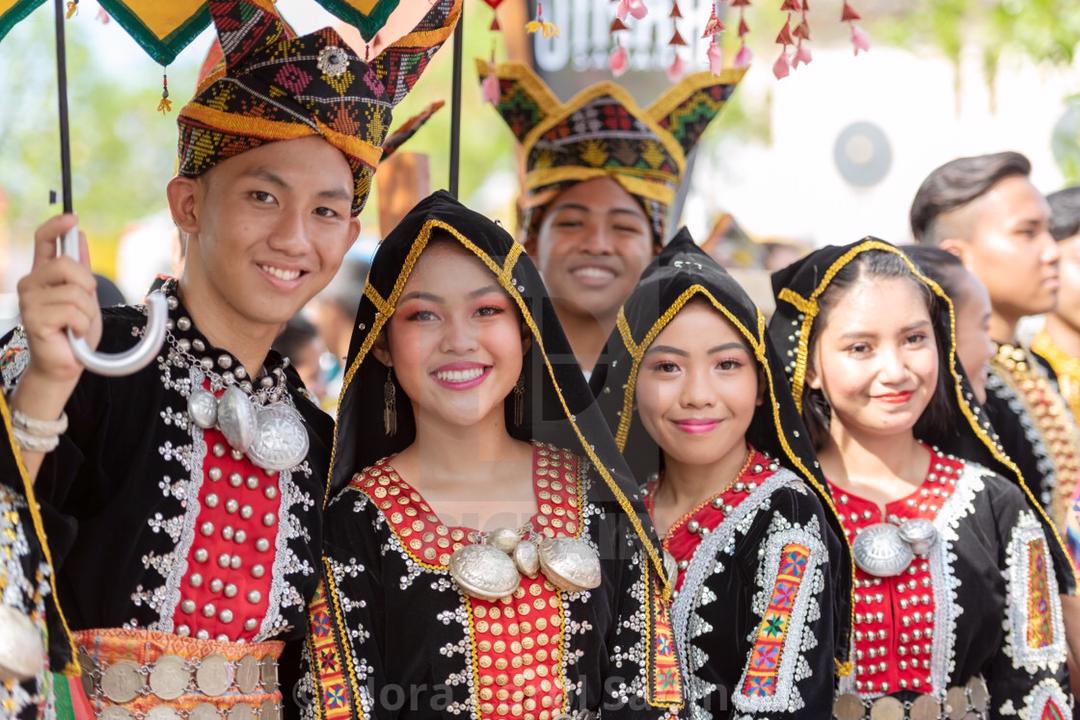By Nurul Azirah Japin
Dusun people have always been equated with Bunun, one of the indigenous tribes in Taiwan that have the most similarities with Dusun Sabah than other tribes from a dozen tribes of Formosa.
Bunun is one of the 16 indigenous tribes recognised by the Taiwanese government.
The Bunun tribe in Taiwan is said to have a culture, beliefs and DNA that are almost the same as the Kadazan-Dusun tribe in Sabah, among them is the worship of the spirit of paddy and the presence of female shamans such as Bobolian or Bobohizan or Tantagas among the Kadazan-Dusun community in Sabah.
According to history, Formosa tribes are the indigenous people who originally lived in Taiwan.
But later, after they were colonised by the Dutch, a large scale of labours were brought in Taiwan and they are the Han people who are the East Asian ethnic group and the original Chinese people.
Before the arrival of the Han people from China in the 16th century, there were about 400,000 to 500,000 Formosa tribes. However, their numbers dwindled, decade after decade with the entry of the Han people to the island.
And that made their position been challenged since the migration of the Han people to Taiwan, to some extent changed their original language and culture.
Thats why not many people know about them as they all have been given the perception where Taiwanese are all like Chinese people in mainland China.
In retrospect, most Taiwanese people are from China. So, where did the indigenous people of Formosa who have many similarities with the ethnicities and tribes in Sabah come from?
Well, seeing that there are similarities in Taiwan indigenous tribe and Dusun, the question of who is who ancestor arises where some people assume that the Dusun come from Taiwan and others say the opposite.
If we look at it, the tribes in Sabah themselves have Chinese features with white skin and their squinty eyes. There are many theories on where this ethnic group come from.
For example, these races are believed to have originated from the Indo-Malayan clump from Southern China to countries in Southeast Asia or that the Kadazan-Dusun are a hybrid of the Chinese and the theory of them being originally from Bunun tribe of Taiwan itself.
In their studies, social scientists and historians take into account the physical aspects, spoken language, blood groups and artistic materials created by the Kadazan-Dusun community.
According to Dr. Yabit, a language expert from Brunei in his speech on the origins of the Dusun people in 2005, “From a linguistic perspective, the ancestors of the Dusun Sabah community migrated from Taiwan thousands of years ago” as quoted by The Star.
However, studies show the genetic age of tribes in Southeast Asia is older than China.
These people belong to the Austronesian family residing in Southeast Asia, one of the Malay archipelago itself. More precisely, most likely they are from the Dusun tribe which is one of the 27 Kadazan-Dusun sub-ethnic groups, the largest indigenous Bumiputra race in Sabah.
And apparently, the latest genetic scientific evidence shows that it is the tribes in Borneo that breed the nation in China. Studies show that the genetic age of ethnic tribes in China is only 30-50 thousand years old, while some tribes in Southeast Asia are as old as 63 thousand years.
Other than that, a genetic study in 1979 showed that the genetics of Dusun are similar to the Iban, Dayak Darat (Bidayuh), Orang Asli Semenanjung (Semang, Jakun, Senoi, etc), Visayas, Paiwan, Ifugao, Tagalog, Atyal, and others.
So, the theory in which the Southeast Asian tribes breed the Chinese race is more applicable given that the Borneo area has a higher diversity than in Taiwan.***
(This article is written as part of the individual assignment series for Feature Writing class)
